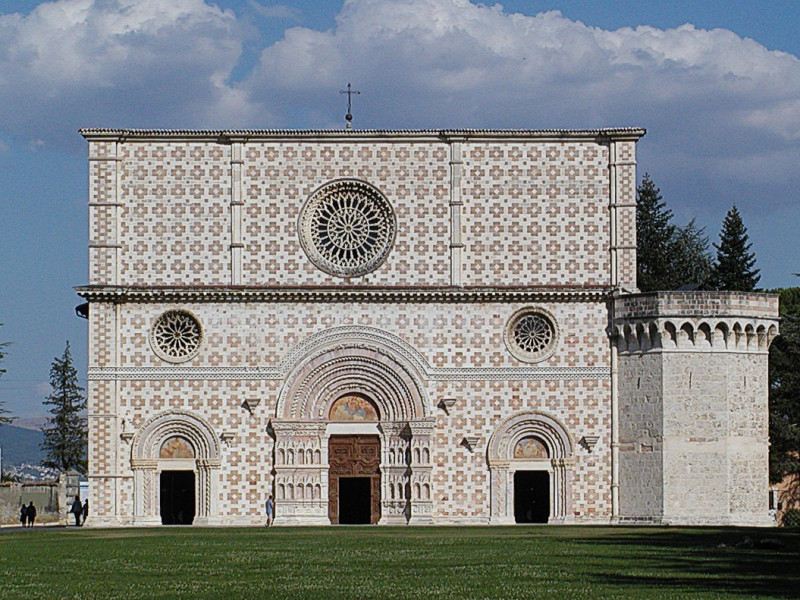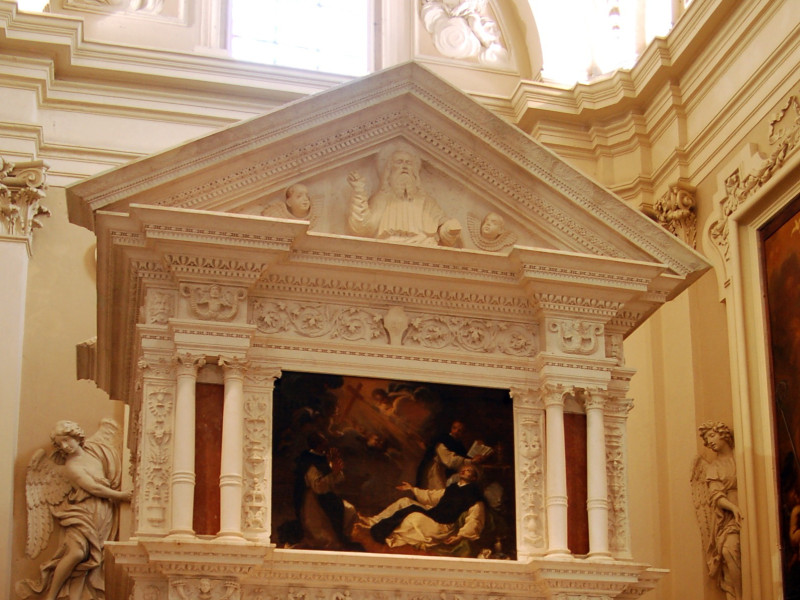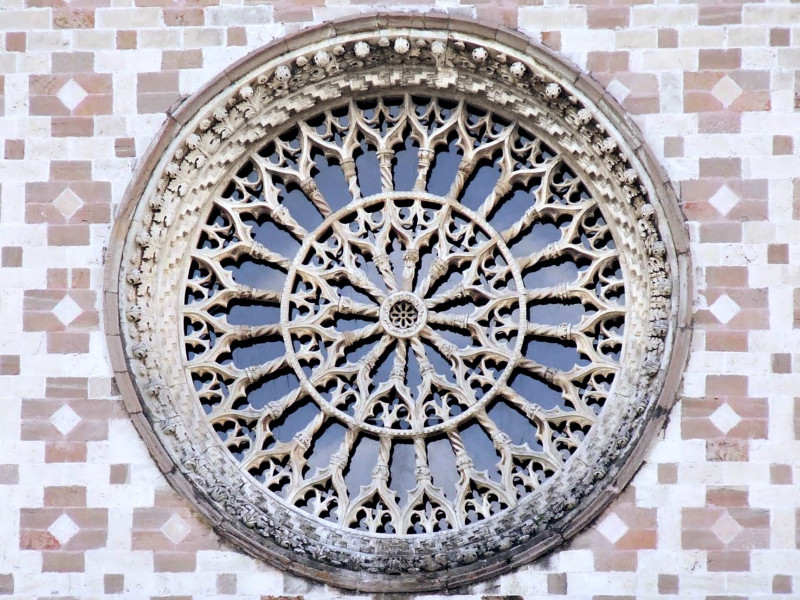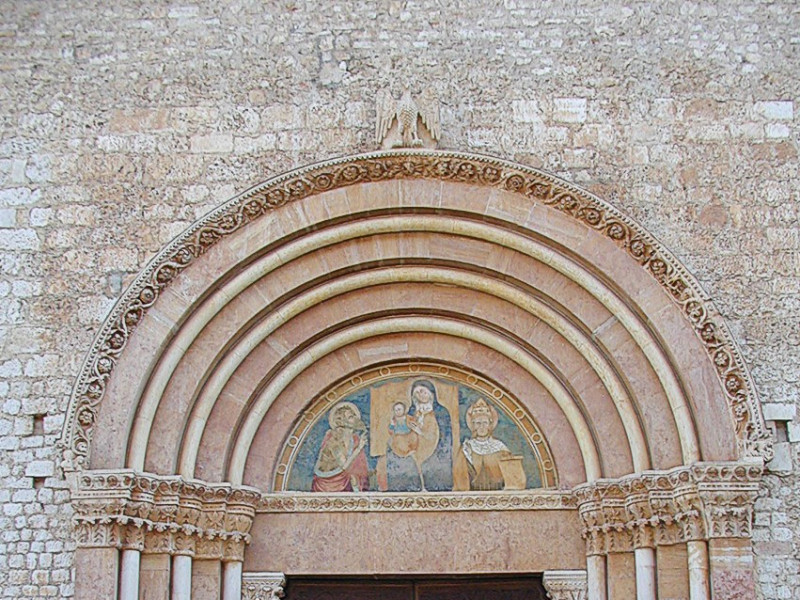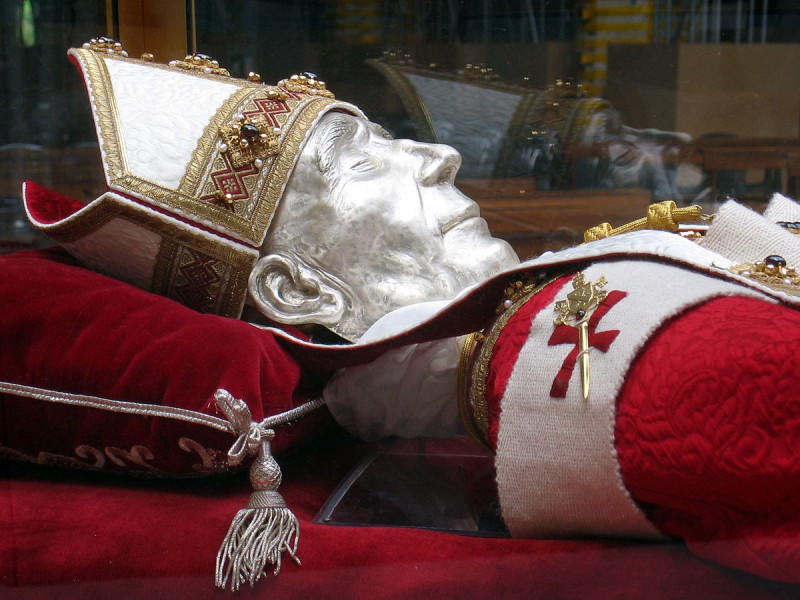Basilica di Santa Maria di Collemaggio
Santa Maria di Collemaggio was founded in 1288 by Pietro da Morrone, here crowned pope with the name of Celestino V on 29 August 1294. Considered the maximum expression of the architecture of Abruzzo, as well as the symbol of the city, was declared "National Monument" in 1902. Since 1327 it houses the remains of the pontiff, currently preserved inside Mausoleum of Celestino V, built in 1517 by Girolamo da Vicenza. It is home to an annual jubilee, the first in history, established with Forgiveness Bull of 29 September 1294 and known as "Perdonanza Celestiniana". The church has been remodeled several times over the centuries mainly because of the damage caused by frequent earthquakes and presents a mixture of different architectural styles. Following the earthquake of 2009, it has undergone consolidation and restoration work that ended in 2017. The facade is considered to be the highest expression of Abruzzese architecture, as well as one of the highest points of Medieval Romanesque architecture in Italy. It stands out quadrangular at the end of a vast green square. On the right corner stands a majestic octagonal tower that originally formed the base of a bell tower. The tower is used during the celebrations of "Perdonanza Celestiniana". Internally the Basilica is divided into three naves. Of particular importance are the paintings placed along the right aisle, in particular Madonna with the saints Agnese and Apollonia in the first niche, Assumption and coronation of Virgin in the second and Crucifixion in the third, all datable to the fifteenth century. Along the left aisle, however, is famous pictorial cycle with Stories from Pope Celestine's life by Carl Ruther from Danzig, a pupil of Rubens. In the apse on the right there is the Pope Celestine's sepulcher, whose remains arrived in L'Aquila in 1327. Adjacent, on the right side, is the monastery. An essay by the writer Carlo Emilio Gadda entitled "The three roses of Collemaggio" is dedicated to Basilica. According to some studies, Basilica presents numerous references to numerology and more generally to symbolism.
